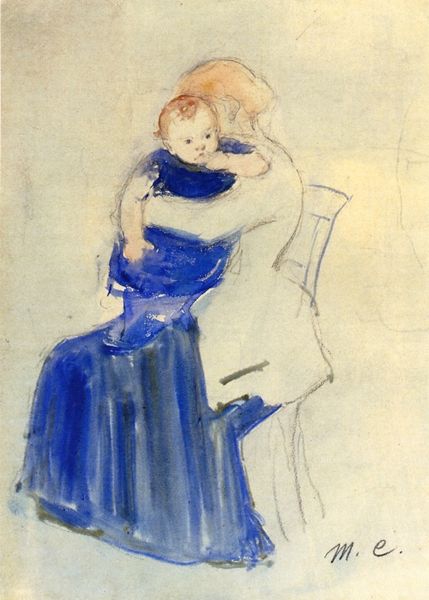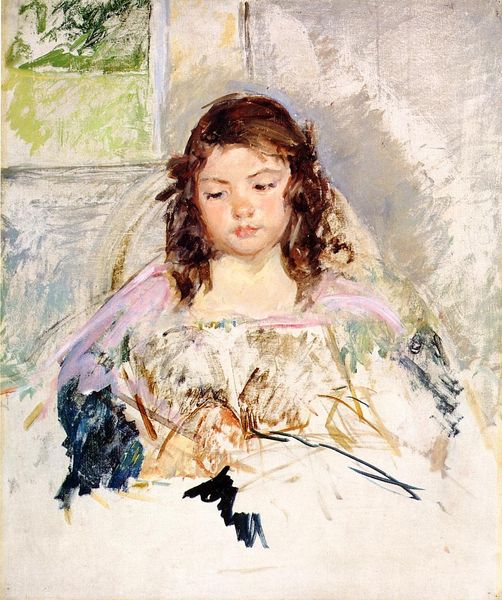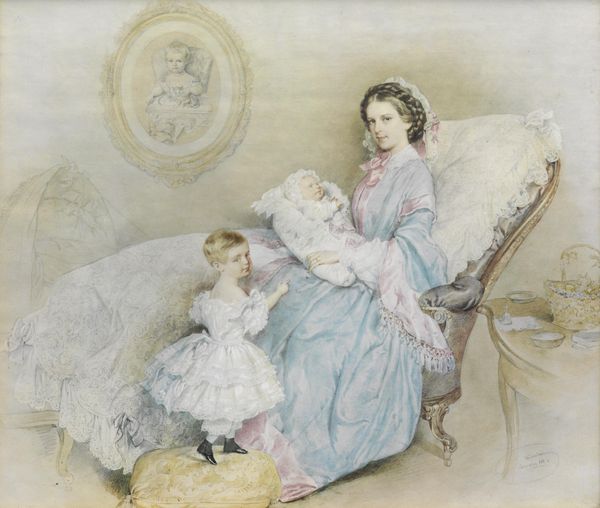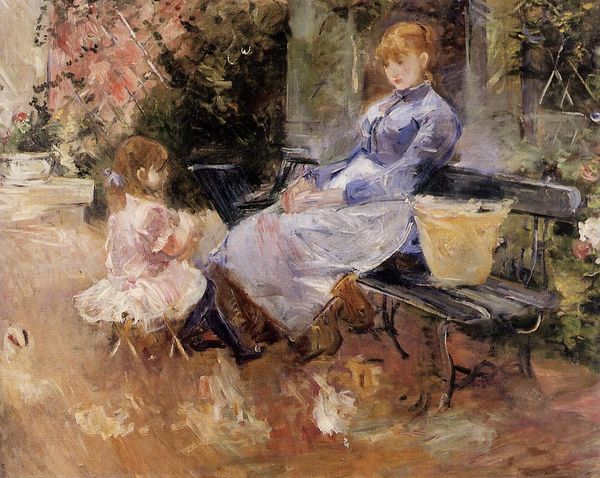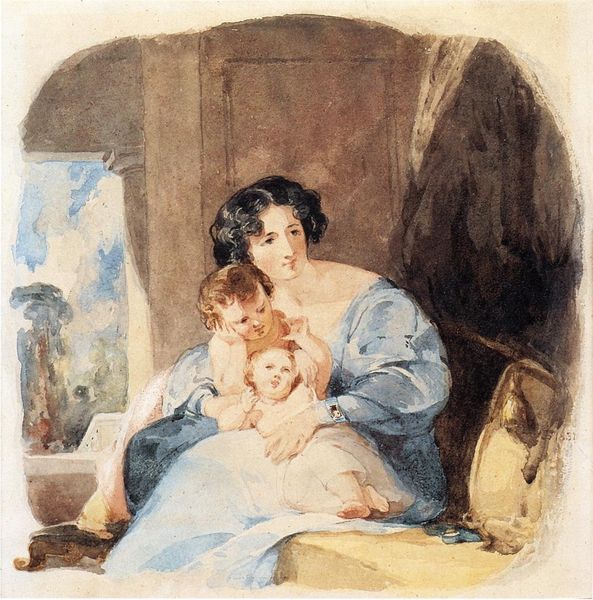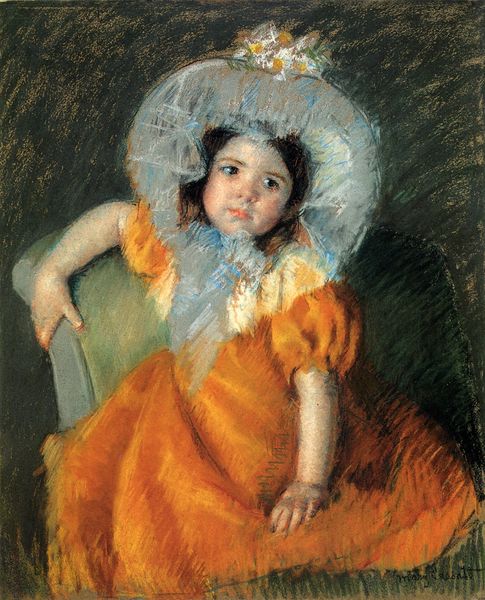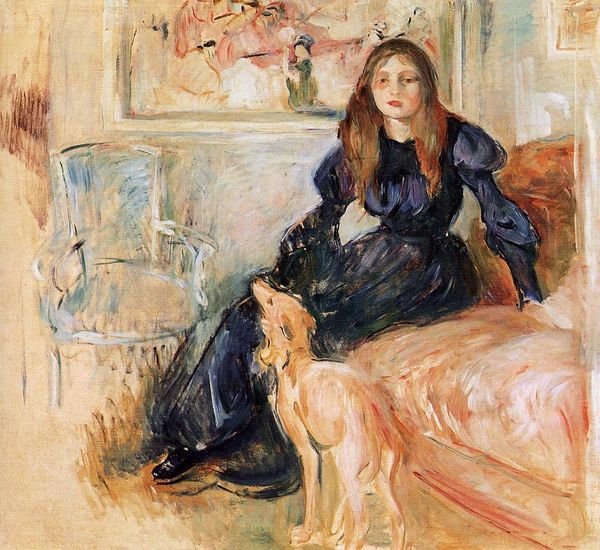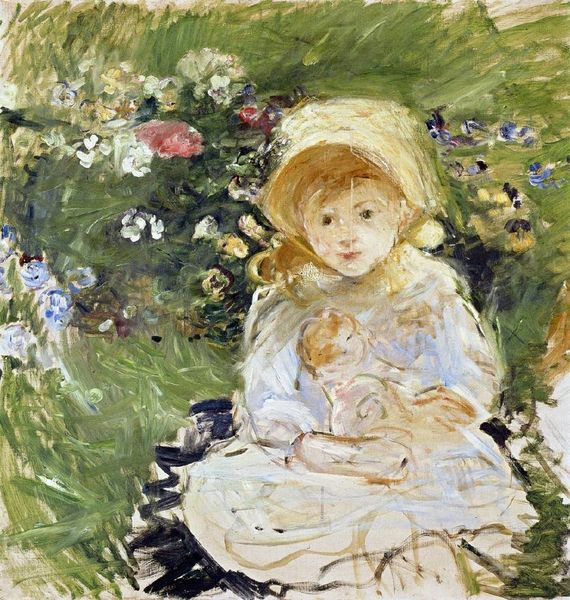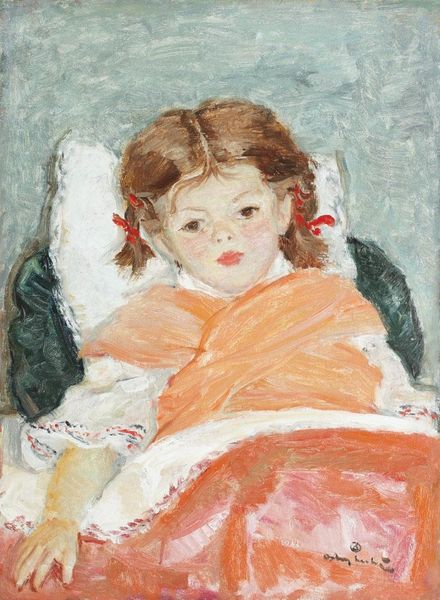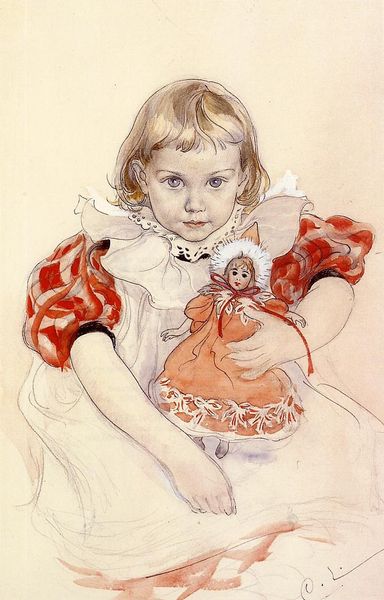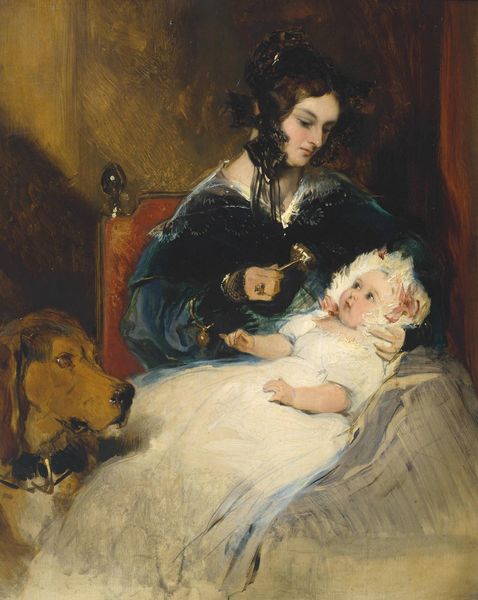
painting, watercolor
#
portrait
#
painting
#
impressionism
#
figuration
#
oil painting
#
watercolor
#
female-portraits
Copyright: Public domain
Editor: So, here we have Berthe Morisot’s “The Artist's Sister Edma with Her Daughter Jeanne,” created in 1872 using watercolor. It feels…domestic, intimate. What do you see in this piece, considering its historical context? Curator: Beyond the immediately visible image of a mother and child, I see a carefully constructed tableau rich with cultural memory. Notice the sister, Edma: posed but relaxed, not gazing at the viewer but inwards. Her posture, and the presence of her child, embodies idealized femininity in the 19th century. This contrasts with Morisot’s own life as a working artist. What emotional qualities do you think that contrast conveys to viewers? Editor: That’s fascinating. It feels… wistful, maybe? Like she’s capturing a life she both knows and, perhaps, exists outside of. Curator: Precisely. The watercolor medium itself also becomes symbolic here, doesn’t it? It is a medium considered feminine. Morisot embraces it, elevates it, but also subtly hints at its limitations – or perceived limitations within the art world at the time. The translucent washes allow the viewer insight. Editor: So, she’s using accepted symbols of womanhood, like the watercolor and the domestic scene, but also quietly questioning them through her own artistic choices and lived experience? Curator: Exactly! Morisot leverages expectation while hinting at an entirely other narrative: that of the female artist asserting herself in a male dominated art world. By focusing on symbols we unearth her revolutionary narrative. Editor: It’s incredible how much is communicated through these delicate choices. Curator: Indeed. It highlights the artist’s ingenuity in conveying powerful emotions and layered meaning with what on first glance is a serene portrait of domesticity.
Comments
No comments
Be the first to comment and join the conversation on the ultimate creative platform.
